You can often tell the species of a tree by its shape.
The tree below could be one of three different species – needle juniper, cryptomeria, or hinoki cypress. Looking closer at the foliage,we can see this is a hinoki, a species that’s commonly styled as formal upright bonsai with highly refined branch pads.

Formal upright hinoki
Hinoki are also commonly grown in group plantings with straight trunks.
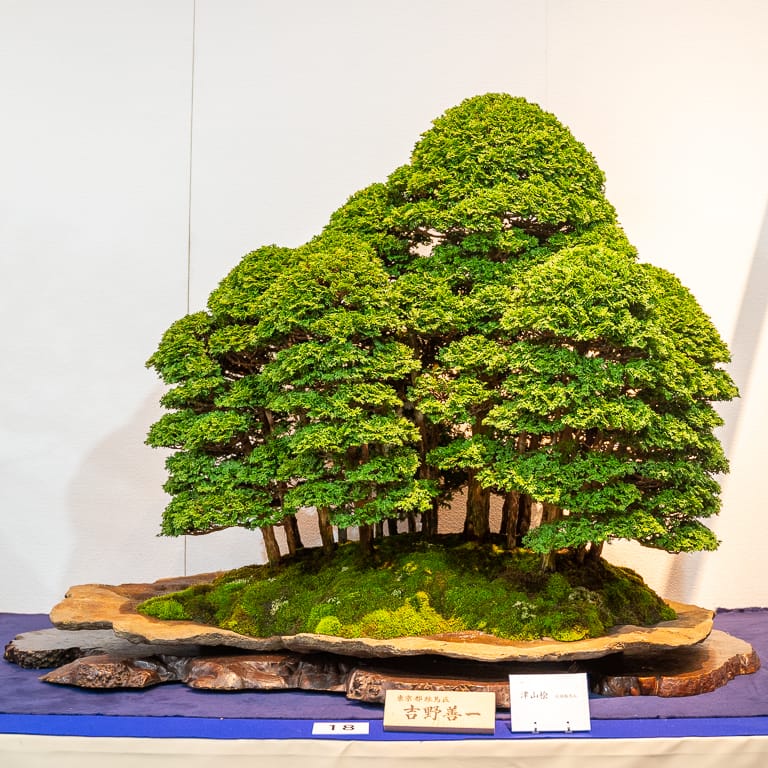
Hinoki group planting
White pines, on the other hand, can appear in a variety of forms. Two of the most common are informal upright and exposed root.
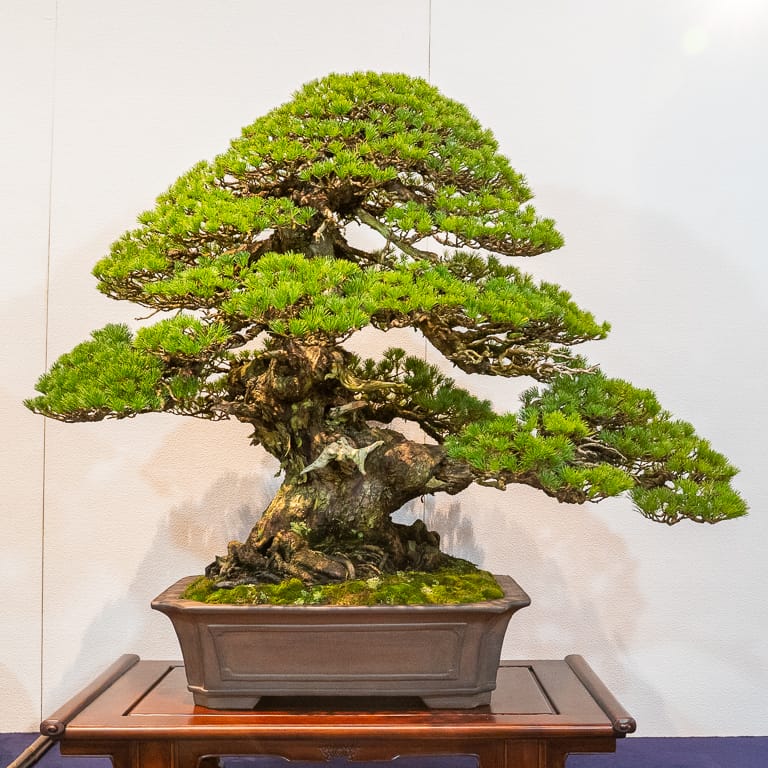
Informal upright white pine

Exposed root white pine
The species with the greatest variability of form is shimpaku juniper. Shimpaku bonsai are more likely to share characteristics like twisting, sinuous movement and ample deadwood than they are to share specific shapes or styles.
As is common for the species, the juniper below has been styled to reveal its most interesting deadwood features – the initial twist, the jin where the trunk turns upward, and the tenjin rising above the apex.

Semi-cascade shimpaku juniper
On the tree below, curving deadwood supports a narrow lifeline.
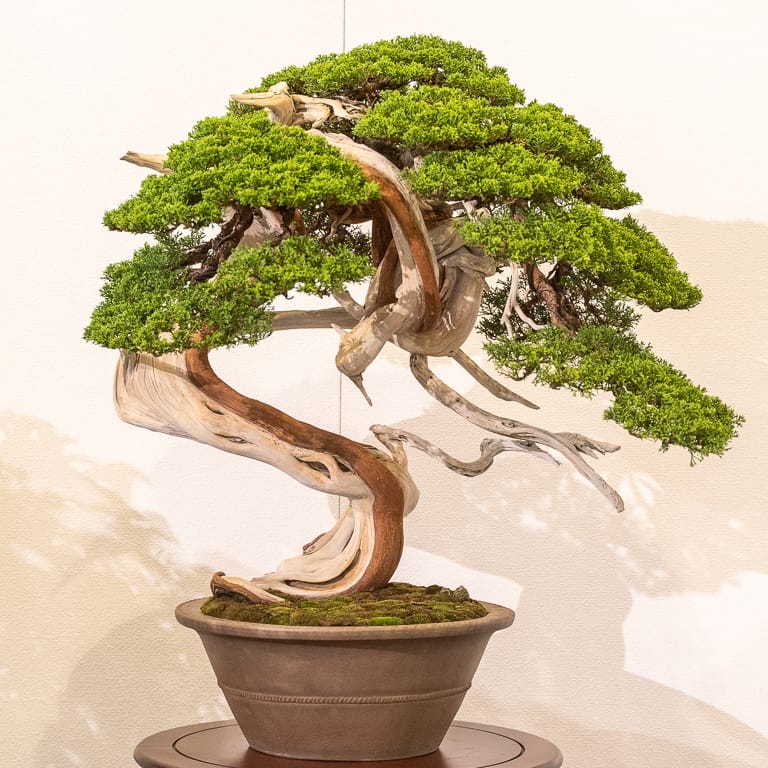
Shimpaku juniper
The sinuous nature of juniper movement can produce some of the most abstract shapes in bonsai. Here’s a good example of a juniper with complex movement in the upper half of the trunk.
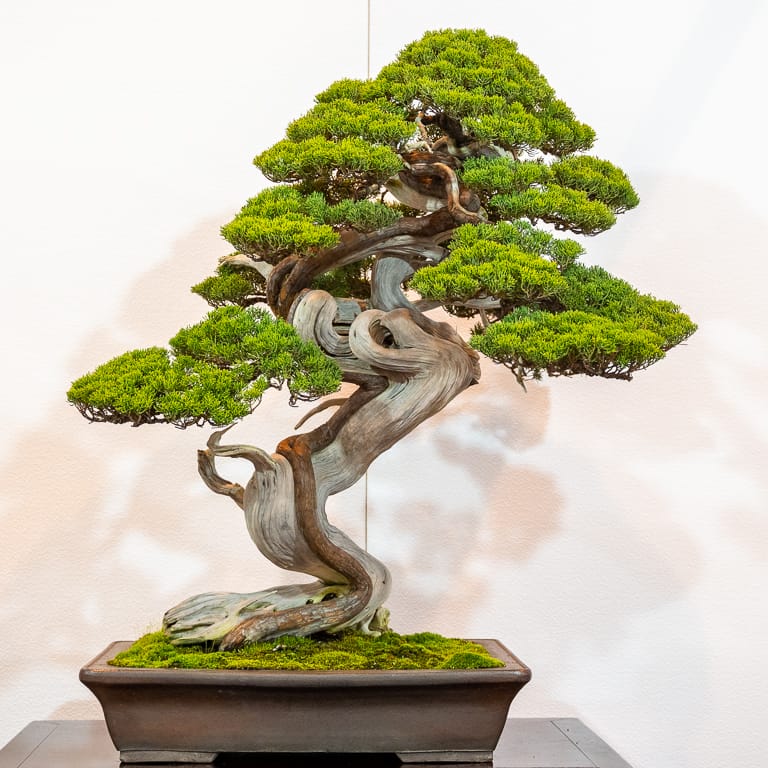
Shimpaku
Mature junipers in Japanese exhibits often have a softer look characterized by a full crown that developed over many years. The massive juniper below was featured in a special display by Hakubun Simomura, Honorary President of the Nippon Bonsai Association.
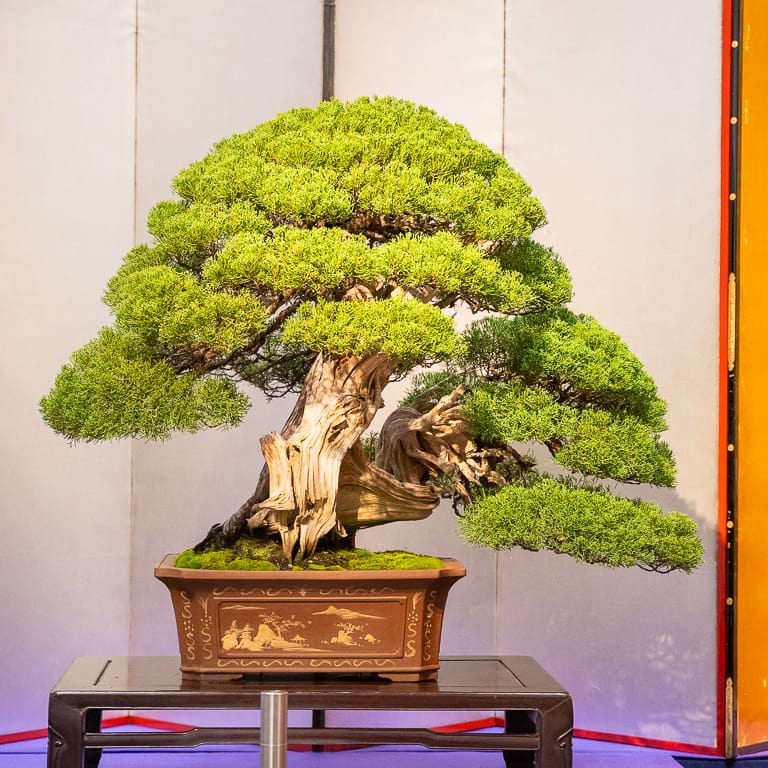
Shimpaku
Such rounded silhouettes are commonly found on old ezo spruce bonsai. Ezo can take a variety of forms, but it’s common for mature specimens to be both full and round.
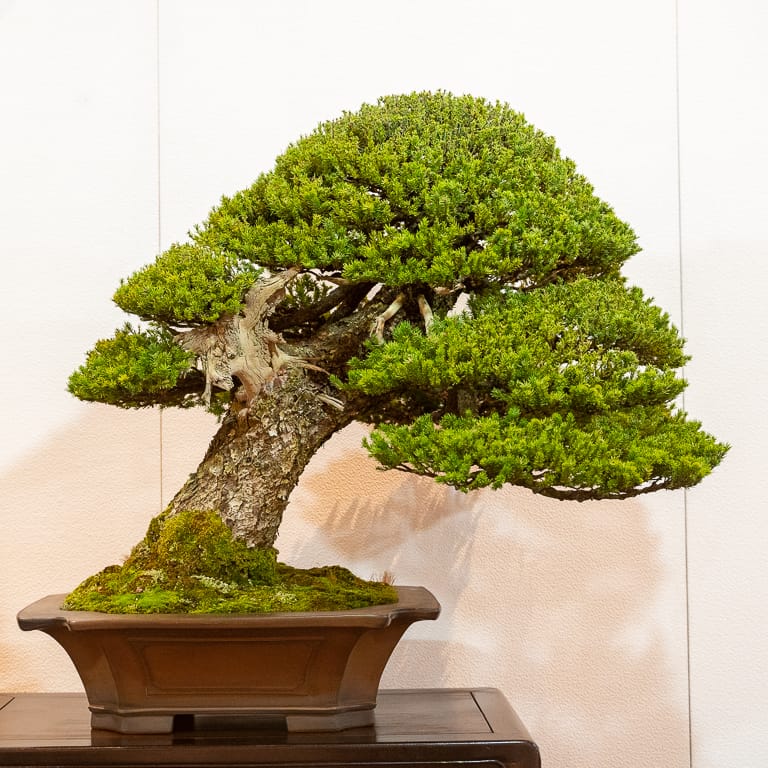
Ezo spruce
The last conifer we’ll look at is a needle juniper. It’s shape is very characteristic of the species. I rarely see other kinds of trees styled in this fashion.
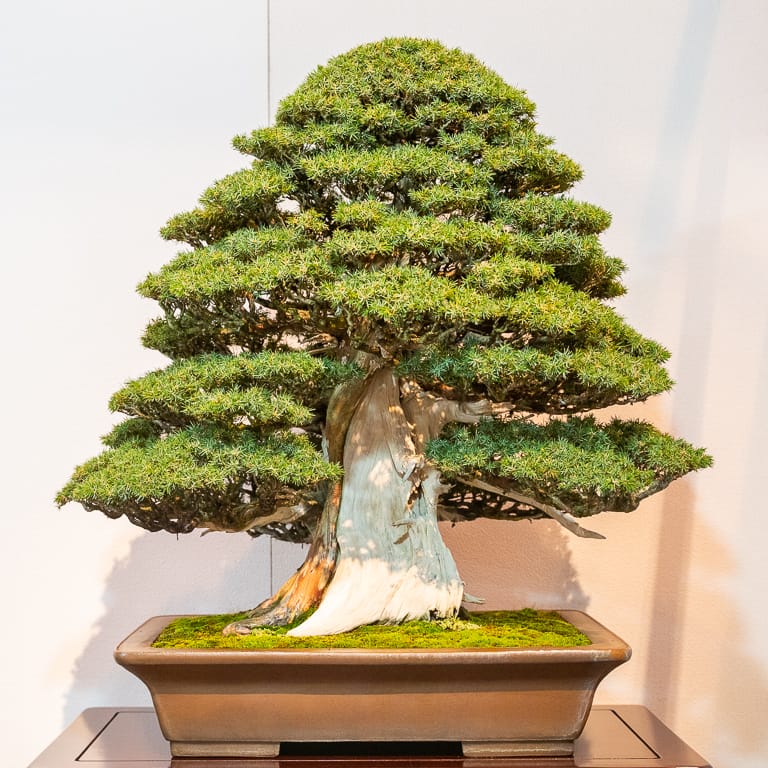
Needle juniper
Up next – Kokufu 101: shohin bonsai.
Subscribe to Bonsai Tonight
New Posts Delivered Every Tuesday and Friday
Kitty says
Thank you. I love the conifers. Thses are large bonsai though. I like the smaller ones as I can move them! You can train a conifer yo do about anything. They are very “showy” trees. Thank ou.
Jonas Dupuich says
Thanks Kitty! Trees 4 and 5 are under 18″, but the rest are pretty big. Will share some smaller ones on Friday!
steve says
the needle Juniper gives me the feeling of a basket and the wide light color shari says to me : ” mother holding a basket ” and while looking over that last tree, iam in that basket #
MrJesseStrong says
Awesome post. The container used with the first Ezo. Who made that? It’s a stunning container!
Jonas Dupuich says
Thanks Jesse! Yes, it’s a fantastic container. If I’m reading the card right, the pot is by Gyozan.
Guilard says
merci pour ses belle photos ,je suis toujours impressionné par c”est veines vivante sur Genévrier Shimpaku
Jonas Dupuich says
Thank you Guilard!